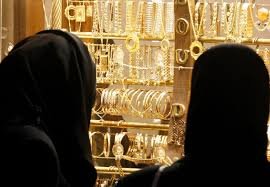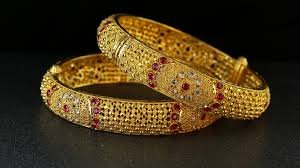Emirati jewelry is much more than a fashion statement; it is a symbol of tradition, heritage, and personal identity. For generations, the people of the United Arab Emirates (UAE) have crafted and worn jewelry that reflects their rich culture and deep-rooted customs. From intricate gold designs to symbolic motifs, Emirati jewelry tells stories of history, love, and celebration.
A Legacy of Craftsmanship

Emirati jewelry design has a long history that dates back centuries. Traditional goldsmithing skills have been passed down through families, ensuring the art remains alive. The use of precious metals such as gold and silver, along with pearls and gemstones, showcases the region’s connection to its natural resources. Gold remains a popular choice, symbolizing wealth and status, while pearls represent the country’s pearl-diving heritage.
Skilled artisans craft jewelry using traditional techniques, including hand-engraving and filigree work. These detailed patterns are often inspired by Islamic art, nature, and Emirati culture. Geometric shapes, floral motifs, and calligraphy are frequently seen in their designs.

Symbolism and Meaning

Every piece of Emirati jewelry carries cultural significance. Necklaces, bracelets, rings, and earrings are often designed with symbolic elements. For example:
- Al Murtaasha: A traditional gold necklace worn by brides, symbolizing beauty and wealth.
- Al Fattam: A nose ring that represents femininity and elegance.
- Al Shnaf: Decorative headpieces often worn during weddings and special occasions.
Jewelry is also believed to bring protection and good fortune. Some designs include talismans or inscriptions of verses from the Quran, believed to ward off negative energy.

Jewelry in Emirati Celebrations
Jewelry plays a prominent role in Emirati weddings and festivals. During traditional weddings, brides are often adorned with elaborate gold sets gifted by their families. The exchange of jewelry is a symbol of blessings and prosperity. Similarly, during Eid celebrations, women and children often wear new jewelry as a mark of joy and festivity.
Another cherished custom is the gifting of gold jewelry to newborns and young girls, symbolizing protection and love. These pieces are often passed down as heirlooms, carrying sentimental value for generations.
Modern Influence and Contemporary Design
While traditional Emirati jewelry remains beloved, contemporary designers are also making their mark. Modern Emirati jewelers blend heritage with innovation, creating designs that appeal to younger generations. By incorporating minimalist styles and using sustainable materials, these designers preserve the cultural essence while embracing modern fashion trends.
Jewelry brands in the UAE, like Azza Fahmy and MKS Jewelry, are known for celebrating Emirati heritage through their collections. They often use Arabic calligraphy, cultural symbols, and intricate patterns to capture the spirit of the UAE.
Preserving Cultural Identity
The government and cultural institutions in the UAE are actively involved in preserving the country’s jewelry heritage. Museums like the Etihad Museum and Dubai Museum display traditional jewelry pieces, educating visitors about their significance. Heritage festivals and craft exhibitions also provide artisans with platforms to showcase their work and pass on their skills.
Additionally, jewelry-making workshops and educational programs are held to encourage younger generations to learn the craft. By promoting traditional jewelry design, the UAE ensures that this cultural art form remains an integral part of its identity.
Conclusion
Emirati jewelry is a dazzling reflection of the UAE’s history, culture, and values. Each piece carries stories of love, protection, and tradition, making it more than just an accessory. As contemporary designers continue to honor these traditions, the legacy of Emirati jewelry remains as vibrant as ever.
Whether worn for a celebration, gifted as a symbol of affection, or cherished as a family heirloom, Emirati jewelry continues to shine as a timeless treasure of cultural pride.
Also read: Why Majlis Spaces Are More Than Just Seating Areas in Emirati Culture














